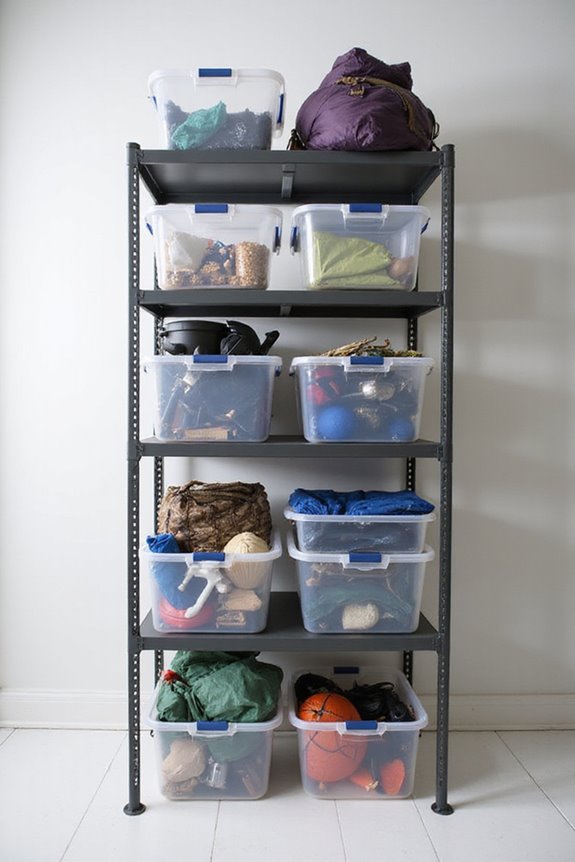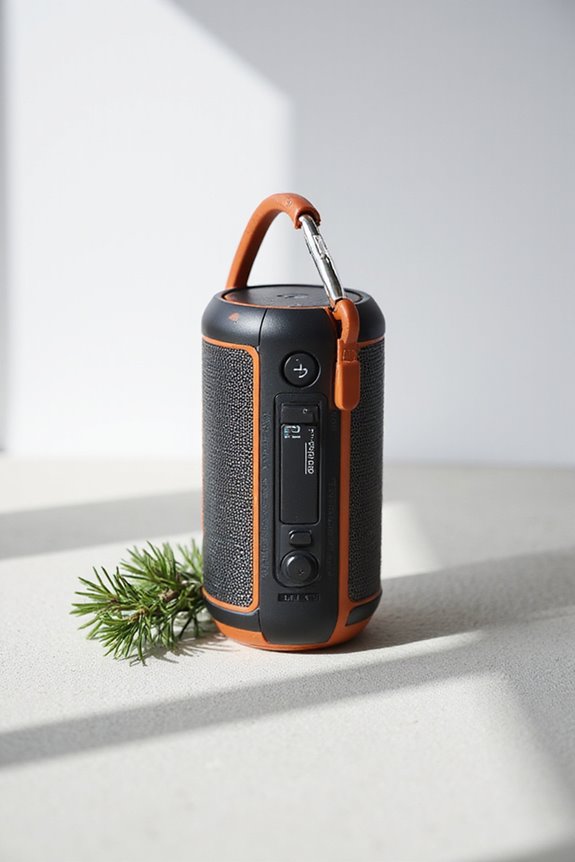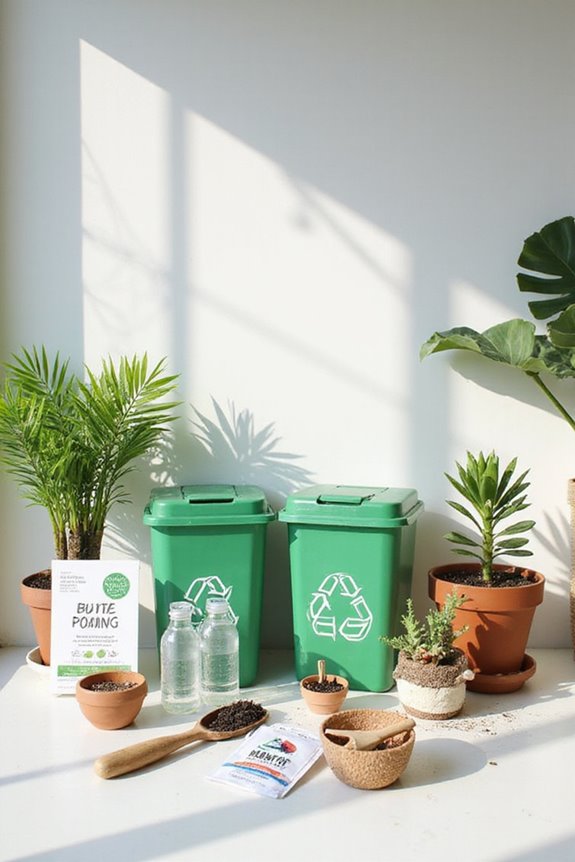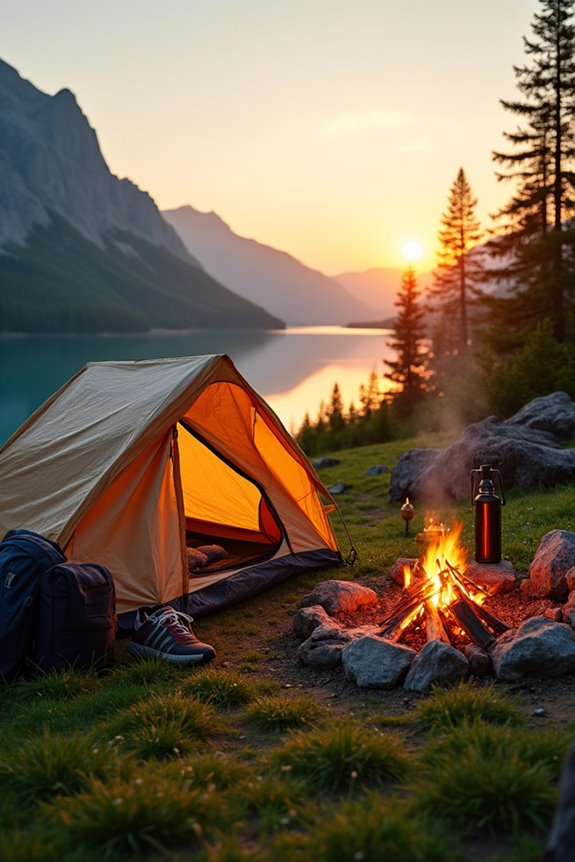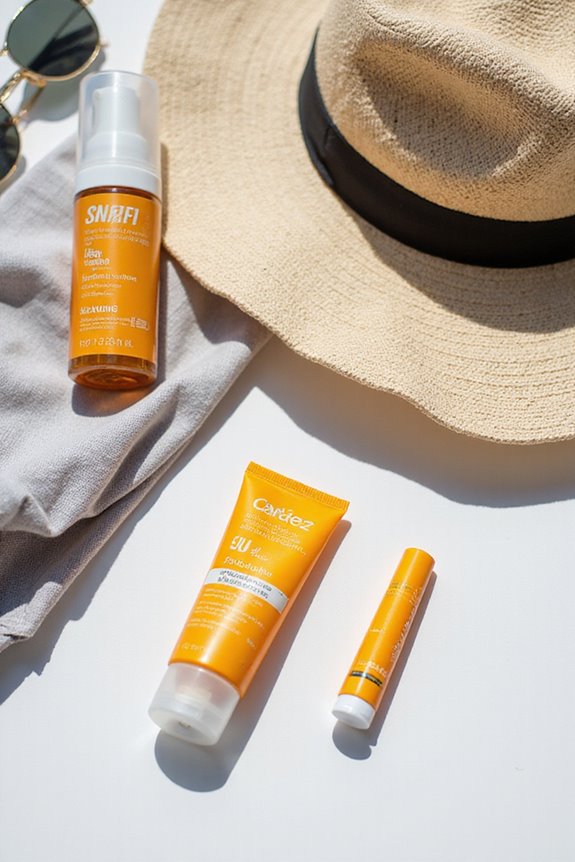Storing camping gear can be a breeze with the right approach. Start with sturdy, weather-resistant containers; high-density polyethylene boxes or aluminum bins are great picks. Organize by category—think shelter, cooking, and clothing—and label everything for easy access. Use overhead racks for larger items and small containers or zipper bags for smaller stuff. Regular cleaning and inspections help gear last longer, too. There’s so much more to explore about keeping gear organized and ready for your next adventure!
Key Takeaways
- Use sturdy, weather-resistant storage containers like HDPE or aluminum to protect gear from damage and the elements.
- Organize gear into categories (shelter, cooking, clothing) and label bins for easy identification.
- Maximize space with stackable and wheeled storage solutions for easy transport and efficient organization.
- Regularly inspect and clean gear to maintain its functionality and extend its lifespan.
- Utilize overhead racks and multi-tier shelving to effectively use vertical space in your garage or closet.
Choosing the Right Storage Containers
When it comes to storing camping gear, the right container can be a game changer, transforming chaos into order faster than you can say “s’mores.” Imagine this: a sturdy, weather-resistant storage box that can withstand the wildest of storms while keeping your precious gear safe, dry, and ready for the next adventure. Container materials play a vital role; high-density polyethylene (HDPE) and aluminum cases offer durability and protection against the elements. Size considerations are equally important—while larger containers may hold more, they can be heavy and cumbersome to transport. Opt for wheeled options to enhance mobility or stackable designs to maximize space. With the right container, camping gear storage becomes a breeze, setting the stage for epic outdoor escapades.
Organizing Your Gear Effectively
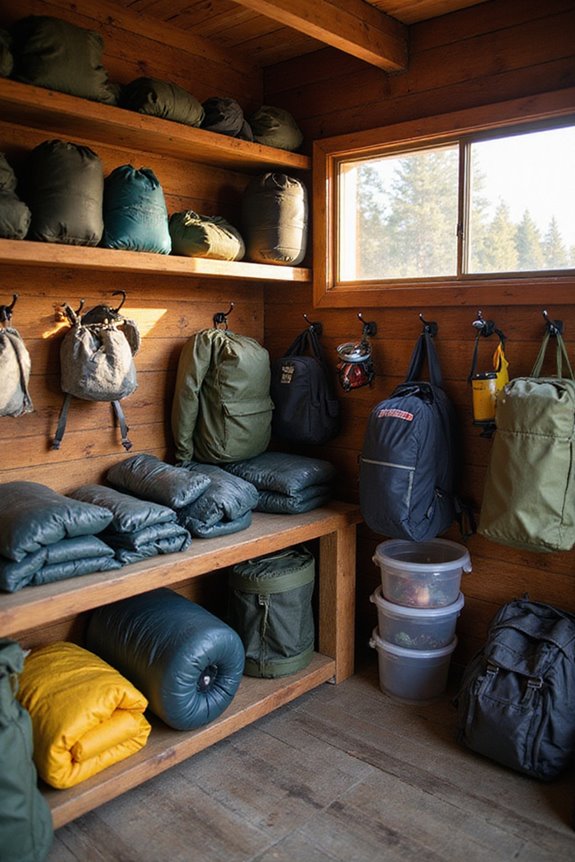
Organizing camping gear effectively can turn a chaotic mess into a well-oiled machine, making every trip smoother and more enjoyable. By embracing gear categorization, campers can divide their equipment into functional groups like shelter, cooking, and clothing. This method not only simplifies packing but also guarantees critical items are easily accessible. Item labeling becomes essential here; clear labels on bins and bags help identify contents at a glance, saving time and avoiding unnecessary unpacking. For those smaller bits and bobs, using ziplock bags or small containers keeps everything tidy. Regular checks and updates maintain organization, guaranteeing that gear is always ready for adventure. With a little effort, camping gear can transform from clutter to clarity, enhancing outdoor experiences. Additionally, utilizing travel organizer bags can further streamline the packing process, making it easier to manage and access gear when needed.
Maximizing Garage and Closet Space
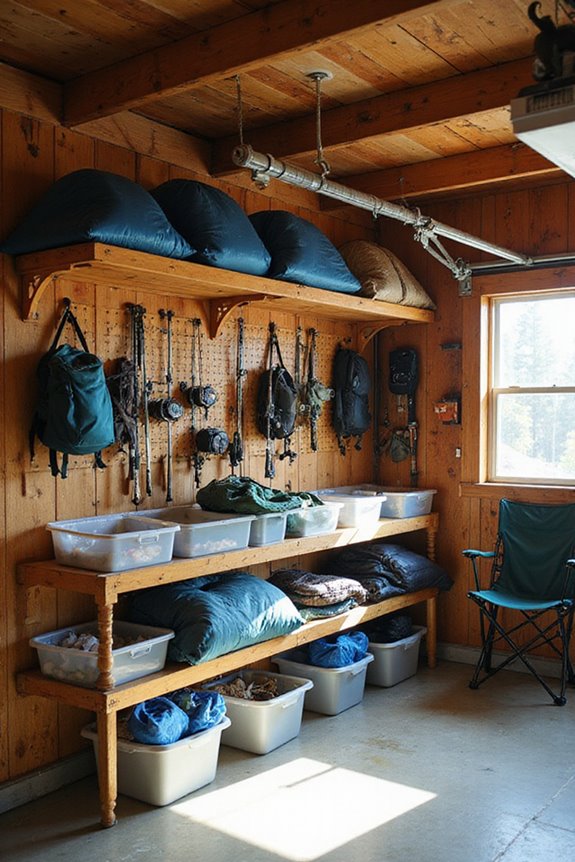
After getting camping gear neatly organized, the next step is figuring out how to make the most of that garage or closet space. Utilizing overhead racks can transform vertical space, perfect for stowing bulky items like tents and sleeping bags. Adjustable racks can flexibly accommodate growing collections—just make sure they’re securely mounted for safety! Meanwhile, closet conversions can create dedicated gear zones that protect equipment from temperature changes and dust. Mixing heavy-duty bins on multi-tier shelving with labeled containers allows for easy access and organization. Plus, small spaces, like spare closets, work wonders for soft items. Embracing these strategies not only tidies up but also keeps the garage functional for parking, making your outdoor adventures more accessible and enjoyable!
Maintaining and Caring for Your Gear
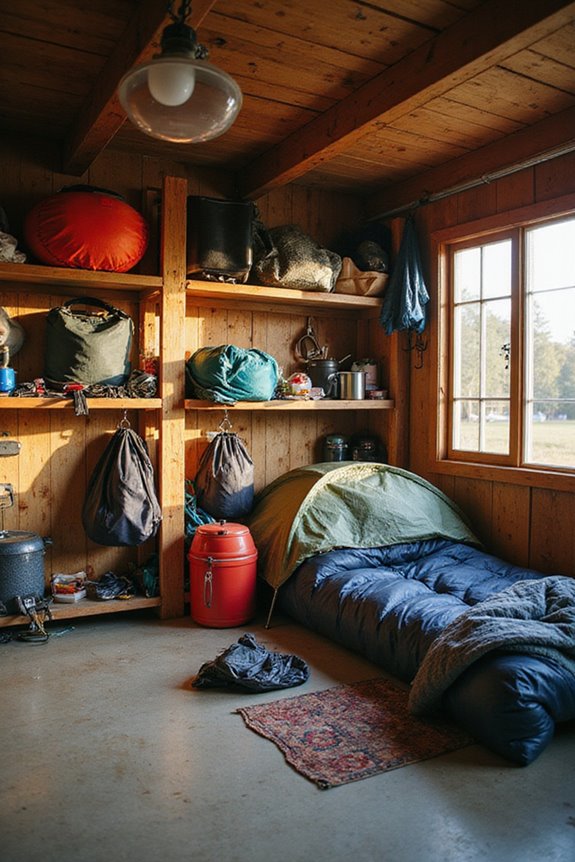
Caring for camping gear can feel like a chore, but it’s really just a way to show appreciation for the adventures it enables. Regular gear cleaning is essential; dirt, mud, and grime can wear down equipment faster than you think. Take a few moments after each trip to wipe down tents, clean cookware, and check for any damage. Speaking of damage, gear inspection is vital, too. A small tear or crack might not seem like a big deal, but it can lead to larger problems down the line. Remember, a little TLC goes a long way in extending the life of your gear. So, treat your equipment well, and it will reward you with countless memorable outdoor experiences. Proper weather resistance features are crucial for maintaining the longevity of your camping tents.
Ensuring Portability and Accessibility
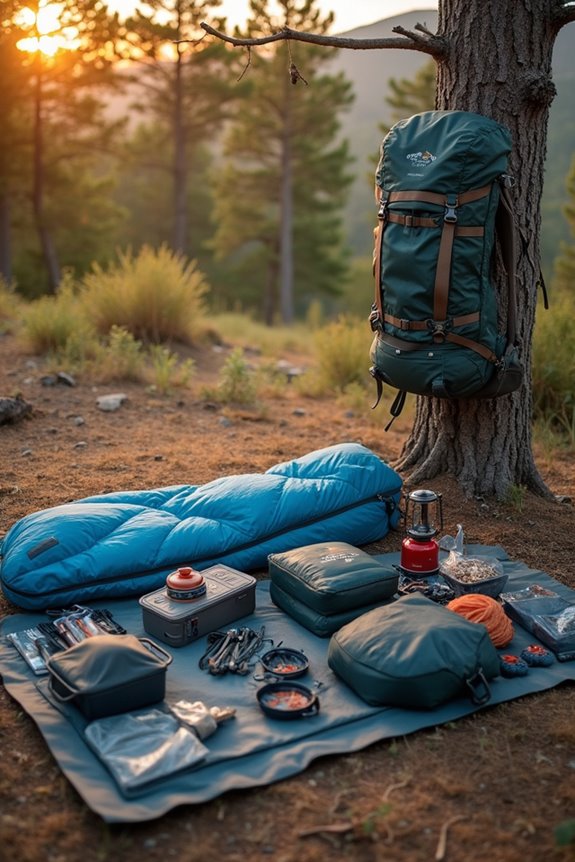
When it comes to camping, ensuring portability and accessibility of gear can make all the difference between a fun adventure and a frustrating trek. Opting for collapsible buckets and quick access bins transforms the packing experience. Lightweight materials, like PVC, make carrying gear a breeze, while handles provide that extra grip during long hikes. Imagine reaching for a labeled bin and finding your cooking essentials without rummaging through everything else! It’s a game-changer. Water-resistant containers keep gear dry, and stackable options mean you maximize space without adding bulk. By reserving outer containers for frequently used items, campers can set up swiftly. With thoughtful organization and smart storage choices, the great outdoors becomes a playground, not a chore. Happy camping!
Cost-Effective Storage Solutions
Storing camping gear doesn’t have to break the bank, especially when savvy campers get creative with cost-effective solutions. For instance, Rubbermaid’s Actionpacker boxes are budget-friendly options that can handle everything from stoves to blankets, while smaller 8-gallon boxes keep smaller items organized. The beauty of these versatile containers is that they can even double as camp stools! DIY enthusiasts can repurpose shoe organizers or furniture cubes for small essentials, adding a personal touch without breaking the budget. Using clear totes lets you see what’s inside without rummaging, saving time and sanity. Investing in collapsible storage can free up space when gear isn’t in use, proving that smart storage choices can lead to both savings and efficiency.
Seasonal Gear Management
Camping gear can easily take over a garage or closet if not managed properly, especially as the seasons change. Implementing a seasonal rotation is key for optimizing space and gear accessibility. For instance, when winter rolls in, summer tents and coolers should be tucked away in labeled bins, making room for snowshoes and warm sleeping bags. Prioritizing frequently used items, like cooking gear and hiking essentials, guarantees they’re easily accessible. Using shelves for larger items helps keep everything organized and tidy. Don’t forget to clean and dry gear before storage to prevent unwanted surprises like mold! By maintaining a biannual rotation schedule, campers can enjoy their gear without the chaos, ready for the next adventure when the seasons shift again.
Frequently Asked Questions
What Materials Are Best for Outdoor Gear Storage?
For outdoor gear storage, waterproof materials like heavy-duty plastic totes protect against moisture, while breathable fabrics prevent mold on delicate items. Combining both guarantees ideal preservation and accessibility, safeguarding diverse gear types from environmental damage.
How Often Should I Replace My Storage Containers?
The storage container lifespan varies based on quality and usage. Best storage practices recommend inspecting containers regularly for signs of damage, replacing low-cost options every 2–3 years, while durable containers may last a decade or longer.
Can I Store Camping Gear in My Basement?
While basement humidity can pose risks, proper precautions like dehumidifiers and temperature control make it feasible to store camping gear. Ensuring dryness and ventilation protects against mold, mildew, and material degradation effectively.
What Are the Signs of Pests in Stored Gear?
Signs of pests in stored gear include visible damage, musty odors, and droppings. Regular gear inspection and proactive pest prevention measures can help identify issues early, ensuring camping equipment remains in prime condition for future use.
How Do I Prevent Mold on My Camping Gear?
To prevent mold on camping gear, proper gear maintenance is essential. This includes ensuring items are completely dry before storage, maintaining humidity levels, and utilizing ventilation to promote airflow, greatly reducing the risk of mold growth.

